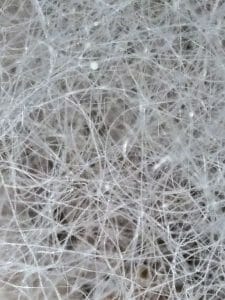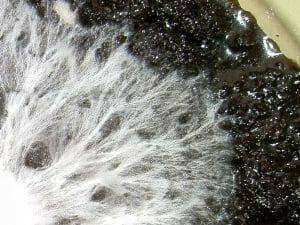The fungi kingdom contains eukaryotic organisms such as mushrooms, molds, mildews, and yeasts. Fungi differentiate themselves from other eukaryotes like plant and animals by having chitin in their cell walls. It is estimated that there are 2.2 million to 3.8 million species of fungi but only about 120,000 have been identified and described. Fungi play an important role in nature as the principal decomposers in ecosystems. Structurally, the hyphae and mycelium are the two main components of fungi.
The Hyphae
Hyphae are the masses of branched, tubular, thread-like filaments about 4-6 micrometers in diameter that penetrate into substrates and absorb nutrients. They secrete enzymes that break down nutrients into smaller molecules before being absorbed. Masses of hyphae are sometimes called a shiro. When hyphae come together and fuse, they form a mycelium. Hyphae grow at the tip with the help of an organelle called the spitzenkörper (German, meaning pointed body). Sometimes hyphae create individual cells by forming walls called septa. New hyphae come from spores on the mycelia.

The image above shows the masses of thread-like filaments that make up hyphae.
The Mycelium
Hyphae branch into a complicated and expanding patchwork called a mycelium which forms the thallus, or vegetative part of the fungus. This part can be microscopic or visible as mushrooms, toadstools, puffballs, and truffles. Spores are formed on the mycelium which develop and grow into hyphae. Only dikaryotic (those with 2 nuclei) mycelium are capable of sexual reproduction while homokaryotic mycelium reproduce asexually. In addition, multi-cellular fungi are classified based on the structure of their mycelium.

The image above shows the patchwork appearance of the mycelium in the oyster mushroom Pleurotus ostreatus.
Comparison Table
| Hyphae | Mycelium | |
|---|---|---|
| The vegetative part of a fungus | No | Yes |
| The filamentous part of a fungus | Yes | No |
| Produces spores | No | Yes |
| Main area of growth on a fungus | Yes, at the tips | No |
| Present in yeast? | Yes | No, individual cells |
| Also called shiro | Yes | No |
| Are thread-like in appearance | Yes | No |
| Has an organelle called the spitzenkörper | Yes | No |
References
- Fungus. (n.d.). In Wikipedia. Retrieved April 18, 2018 from https://en.wikipedia.org/wiki/Fungus
- Alexopoulos, C.J., Moore, D. & Ahmadjian, V. (2018). Fungus. In Encyclopedia Britannica. Retrieved from https://www.britannica.com/science/fungus
Hyphae vs. Mycelium
No comments:
Post a Comment